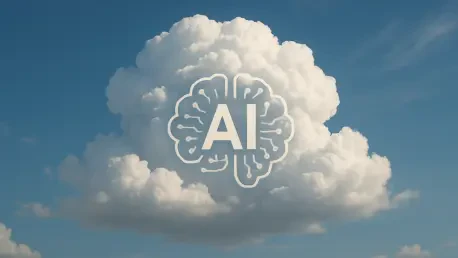Artificial Intelligence (AI) has become a headline-grabbing force within the tech industry, prompting a pivotal discussion about its impact on cloud-native innovation. As AI rapidly gains dominance in strategic discussions and tech events, it raises critical questions about its influence on cloud-native technologies that have long been pivotal in modernizing applications and driving enterprise strategies. The urgency surrounding AI and its possibilities introduces a paradox; whether it diverts attention from or accelerates cloud-native progress is a matter of intense debate. While businesses rush to integrate AI into their operations, establishing its role as a transformative catalyst, the implications for the existing cloud-native infrastructure can no longer be ignored.
The Shift in Focus to AI
In recent years, AI has increasingly usurped the spotlight previously held by cloud-native technologies. Enterprises that once viewed cloud-native methodologies as the cornerstone for application modernization and scalability have now diverted their focus towards AI. The compelling narrative of AI’s transformative potential has steadily gained traction, often overshadowing the vital contributions of cloud-native technologies to hybrid, edge deployments, and modular infrastructures. As a consequence, the excitement that once surrounded these technologies has become subdued, with innovation and development initiatives seeing both delay and deprioritization.
Despite this shift, cloud-native technologies continue to play a crucial role in the tech landscape. They laid the groundwork for advancements such as Kubernetes, observability platforms, and mesh architectures, which are integral to scaling applications and optimizing deployment strategies. However, AI’s dominance has presented new opportunities for convergence, prompting a reevaluation of how these technologies can be synergistically integrated. Rather than existing as opposing forces, AI and cloud-native technologies hold the potential to complement each other, creating powerful capabilities that push the boundaries of innovation.
AI’s Contributions to Cloud-Native Ecosystems
AI’s potential to supercharge cloud-native ecosystems is increasingly apparent in various dimensions. One such area is the enhancement of CI/CD pipelines through predictive analytics and anomaly detection. AI-driven processes introduce advanced self-healing capabilities, offering proactive problem identification and automatic rollbacks for errant deployments. These processes are invaluable in fast-paced development environments, optimizing deployment strategies and reducing human intervention. Consequently, AI’s integration can lead to more efficient development cycles and robust applications.
Another critical contribution is within observability tools. Leveraging machine learning models, AI can discern patterns, forecast potential incidents, and identify root causes with exceptional speed and accuracy. The reduction of false positives, coupled with accelerated response times, dramatically enhances teams’ operational efficiency. AI-fueled observability enables a more proactive approach to incident management, leading to improved service reliability and customer satisfaction. This advancement highlights AI’s role in elevating cloud-native technologies’ effectiveness and reinforcing their relevance in modern tech frameworks.
Challenges and Considerations
Despite the promising advancements facilitated by AI, its rapid adoption does present significant challenges. One notable concern is the potential neglect of core cloud-native innovations as mindshare shifts towards AI-centric developments. As vendors and developers increasingly prioritize AI narratives, there is a risk of diverting resources and attention from essential cloud-native enhancements. This often results in hasty AI integrations that lack the robust foundational support needed for true functionality, posing risks to production environments.
Moreover, the allure of AI buzzwords can lead organizations to implement AI-led solutions without adequately assessing their practicality. This superficial adoption can lead to a divergence from the critical improvements necessary for sustained cloud-native growth, such as enhancing infrastructure robustness or refining developer experiences. The urge to align with AI trends must be tempered with a thorough assessment of actual benefits, ensuring that adoption decisions are driven by tangible outcomes, not mere novelty. Enterprises must remain vigilant in maintaining a balanced approach that promotes innovation without sacrificing foundational integrity.
Future Directions and Strategic Integration
Artificial Intelligence (AI) has emerged as a central topic in the tech sector, especially regarding its impact on cloud-native innovation. As AI becomes more entrenched in strategic discussions and tech forums, major questions arise about its effect on cloud-native technologies that have traditionally been crucial for modernizing applications and shaping enterprise strategies. The fast-paced development of AI and its potential creates a paradox. It’s contentious whether AI is diverting attention from or actually accelerating the advancement of cloud-native technologies. On one hand, businesses are eager to integrate AI, recognizing its potential as a transformative agent. On the other hand, the question remains: what effect will this AI-driven focus have on the current cloud-native infrastructure? Is it an enhancement or just a distraction? The implications are significant, meriting close scrutiny. As organizations strive to find the right balance, the convergence of AI and cloud-native strategies could redefine the landscape of technology innovation.









